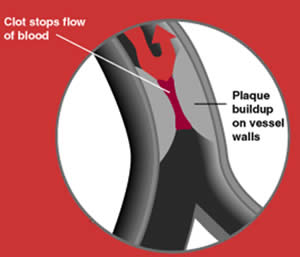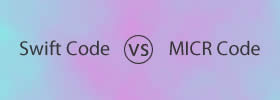Difference between Heart Attack and Panic Attack
Key Difference: Heart attack is when the blood flow to the heart is restricted causing the heart cells to die. The lack of blood flow is caused by a partial blockage to the a coronary artery causing the rupture of a vulnerable atherosclerotic plaque, an unstable collection of lipids and white blood cells in the wall of an artery. Panic attack is a condition where a person experiences a sudden onset of fear, nervousness and/or apprehension. It is known as a panic disorder and is a serious condition. Panic disorders strike without reason, without warning and can last somewhere between minutes to hours.
Heart attack and panic attack are two different conditions that a person can suffer from. These both conditions are often confused as they may share similar symptoms. A person can suffer from a panic attack during a heart attack, which can make matters worse. In all consideration, these are two different conditions. Heart attack can result in a person dying, while panic attack will cause fainting at the most. Heart attack deals with the heart, while panic attack deals with the mind. Let’s try to understand each individually.

Heart attack is when the blood flow to the heart is restricted causing the heart cells to die. The lack of blood flow is caused by a partial blockage to the a coronary artery causing the rupture of a vulnerable atherosclerotic plaque, an unstable collection of lipids and white blood cells in the wall of an artery. Heart attack is also known as Myocardial infarction (MI) or acute myocardial infarction (AMI). The reduced blood flow results in restricted oxygen supply to the heart, which manifests itself as severe pain and discomfort in the chest. This pain can then spread to the shoulders, arms, neck, jaw, or back.
Let’s simplify what happens during a heart attack. Plague made up of calcium, proteins and inflammatory cells cover the lining of the arteries, where they are deposited when the blood flows to the heart. The plague lining becomes hard after constant deposition and then cracks. The ruptured plague gets built up in the arteries blocking the blood from going through to the heart valves. The oxygenated blood never reaches the heart, causing the heart to become starved. This is similar to when a person not being able to get oxygen or air. The cells that do not receive the oxygen start to die. Note: This is permanent damage; the cells do not automatically rejuvenate. The dying of the cells manifests itself as pain and discomfort in the chest. Another reason for a heart attack could be a severe spasm or tightening of a coronary artery. The spasm cuts off blood flow through the artery, which leads to an attack. These spasms can occur in coronary arteries that do not have plaque built up.
Symptoms of a heart attack include: Discomfort (chest, arm, below the breastbone, back, jaw, throat and/or arm), pressure, heaviness, pain (chest, arms and/or below the breastbone), sweating, nausea, vomiting, shortness of breath, irregular heartbeats. During a heart attack, the symptoms last 30 minutes. Some people may also have a heart attack without any symptoms; these are known as ‘silent’ heart attacks and are common in diabetic patients.
 Panic attack is a condition where a person experiences a sudden onset of fear, nervousness and/or apprehension. It is known as a panic disorder and is a serious condition. Panic disorders strike without reason, without warning and can last somewhere between minutes to hours. Panic disorders are triggered by a situation that causes the victim some sort of fear. It can also come on by a series of stressful events. During this period the person may feel like their heart is about to burst out of their chests and that they cannot seem to get away from the situation. Some panic attacks may subside on their own, while others require help from additional personnel to help them calm down. People suffering from panic attacks can become violent and attempt to hurt others. First-time suffers are said to call emergency services, while others can manage without experienced medical help.
Panic attack is a condition where a person experiences a sudden onset of fear, nervousness and/or apprehension. It is known as a panic disorder and is a serious condition. Panic disorders strike without reason, without warning and can last somewhere between minutes to hours. Panic disorders are triggered by a situation that causes the victim some sort of fear. It can also come on by a series of stressful events. During this period the person may feel like their heart is about to burst out of their chests and that they cannot seem to get away from the situation. Some panic attacks may subside on their own, while others require help from additional personnel to help them calm down. People suffering from panic attacks can become violent and attempt to hurt others. First-time suffers are said to call emergency services, while others can manage without experienced medical help.
Symptoms of panic attack includes: palpitations, and/or accelerated heart rate, sweating, trembling, shaking, shortness of breath, chocking, hyperventilation, chest pain, discomfort, nausea, dizziness, lightheadedness, fainting spells, depression, fear of losing control or going insane, sense of impending death, numbness or tingling sensations, hot flashes or chills.
Due to many similarities between the symptoms of panic attack and heart attack. A person may assume that they may be suffering from a heart attack, even if they are not. While, many other people may put of heart attack believing that they are just suffering from panic attacks. These are very serious conditions and the patient should seek medical help if suffering from any of these symptoms. A person that is not a first-time sufferer of panic attack will be able to tell the symptoms apart from a heart attack.
Image Courtesy: skepticalraptor.com, panicattackwiki.com









Comments
It's hard for me I get painc attack and I have a small heart condition
theresa
Thu, 04/30/2015 - 06:39
Add new comment